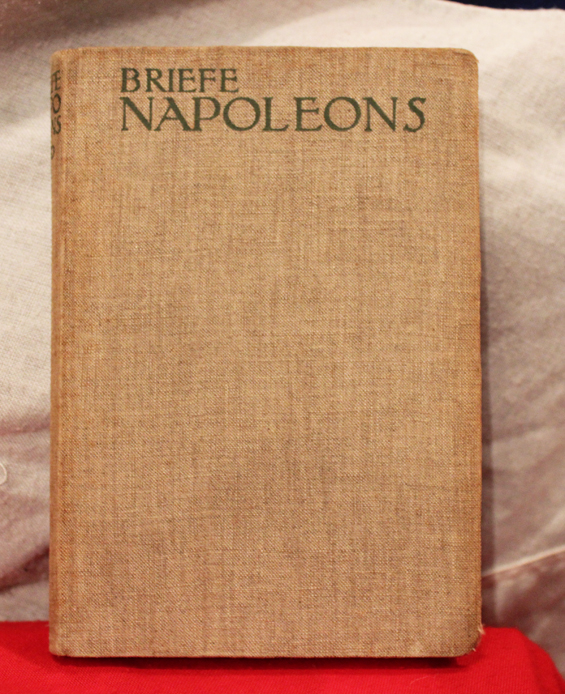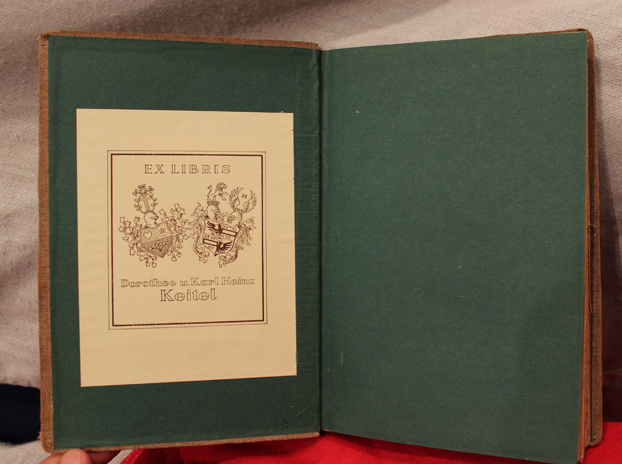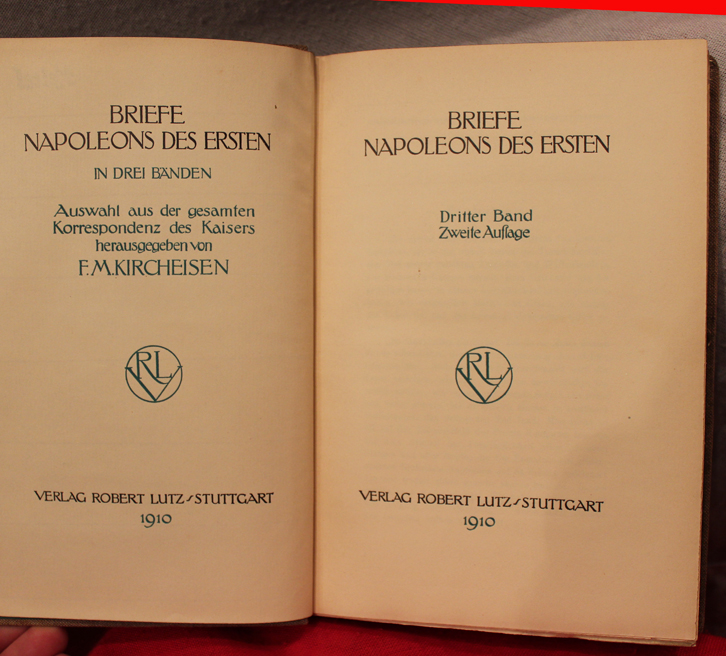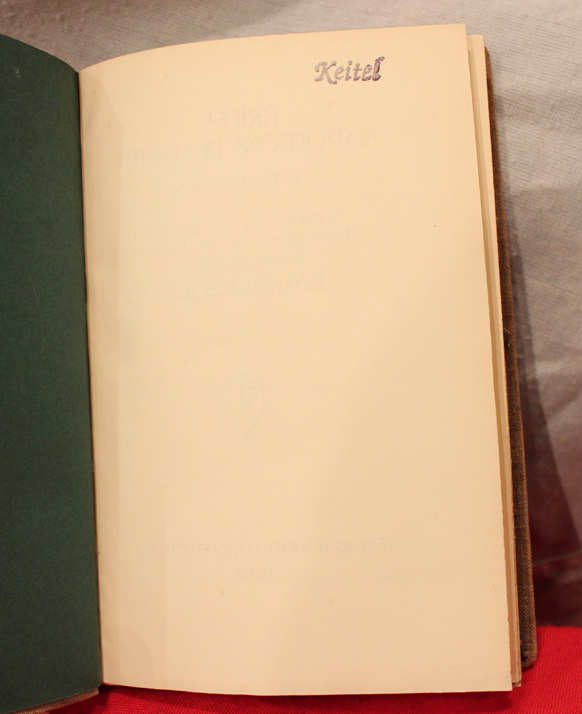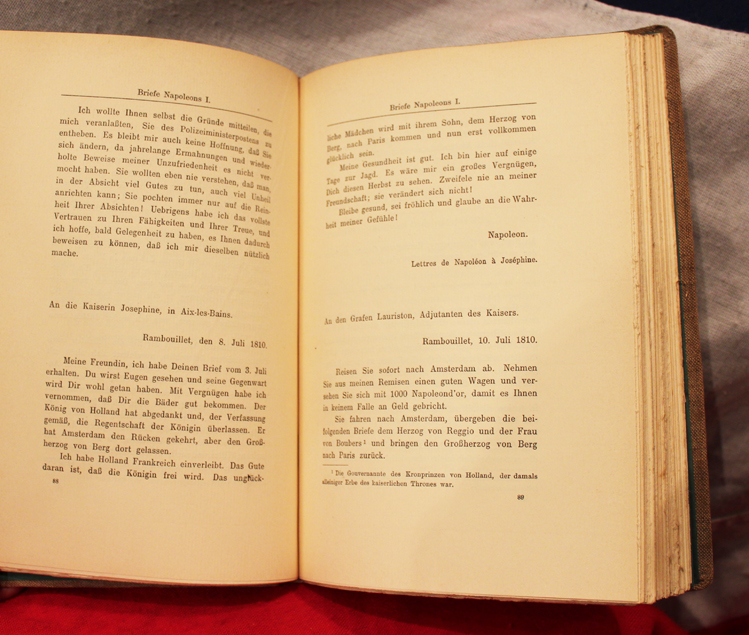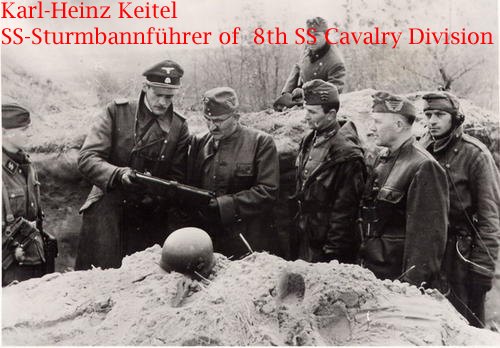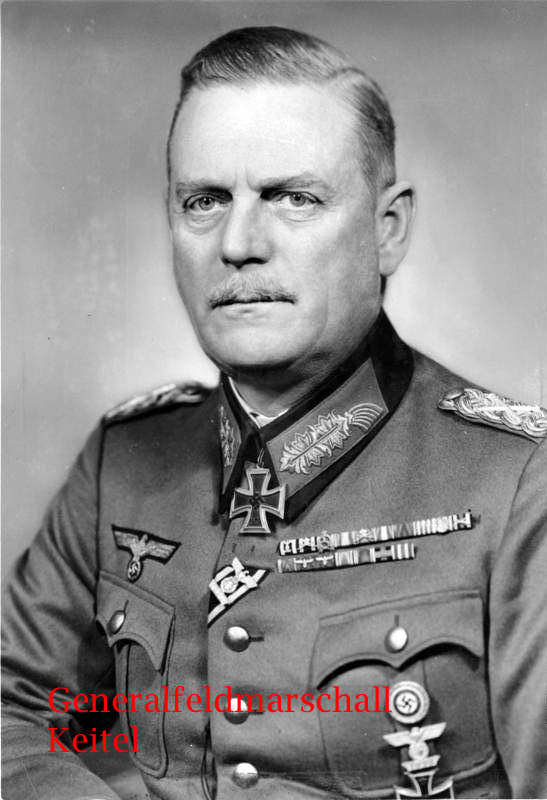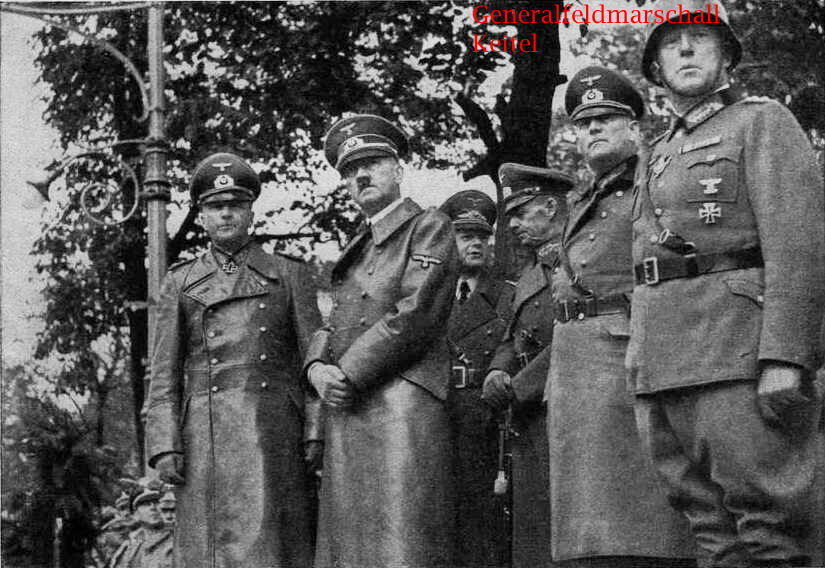A Most Rare Item Taken From, Hitler’s No. 2, Field Marshal Keital’s Personal Library in Berlin 1946. ‘Briefe Napoleons’ From Field Marshal Keitel's Personal Collection, From His Late Son, an SS Sturmbanfuhrer, Who Was Killed in Combat
Briefe Napoleons des Ersten : in drei Banden ; Auswahl aus der gesamten Korrespondenz des Kaisers. Napoleon the First. Selection from all the correspondence of the emperor. Published in 1910; Napoleon's correspondence from 1809 until his death in 1821. Published in 3 volumes this is volume 3. Taken in 1946 from the family library of Field Marshal Keitel, and one of two books from the library we have acquired, the first one was sold. Bearing the Ex Libris Book Label of his family and eldest son, who he lost in the war, Karl-Heinz Keitel SS-Sturmbannfuhrer of 8th SS Cavalry Division Florian Geyer, awarded the German Cross in Gold, Iron Cross 1st Class for heroism, Iron Cross IInd class, Close Combat Clasp & Wound Badge in black. Wilhelm Bodewin Johann Gustav Keitel (22 September 1882 - 16 October 1946) was the most famous German field marshal of WW2 who served as chief of the Oberkommando der Wehrmacht (Supreme Command of the Armed Forces) for most of World War II, making him the Chief of Defence for Germany and Hitler's number two after Reichmarshall Goring. At the Allied court at Nuremberg, he was tried, sentenced to death, and hanged as a war criminal. He was the third highest-ranking German officer to be tried at Nuremberg. Karl-Heinz Keitel was born on 2 January 1914, in Wolfenbuttel, the eldest son of Wilhelm Keitel who would rise to become Chief of the OKW, the German Military High Command, during World War II. Karl-Heinz joined the Heer in 1934 and served in various cavalry units following the outbreak of war in 1939. In June 1943 he was assigned to the Kavallerie-Schule in Potsdam-Krampnitz, and served as a battalion commander, and later the regimental commander of the Kavallerie-Regiment Nord. On 5 August 1944, he transferred into the Waffen-SS and served with the 22. SS-Freiwilligen-Kavallerie-Division "Maria Theresia". On 20 October of that year, he was promoted to command SS-Freiwilligen-Kavallerie-Regiment 17 / 22.SS-Freiwilligen-Kavallerie-Division "Maria Theresia" in the area of Hungary. In November 1944, combined with the Florian Geyer division, the "Maria Theresia" was assigned to the garrison of Budapest. On 12 December he was wounded in action while defending against Red Army probing attacks into Budapest for which he was awarded the Wound Badge in Black.
In March he transferred to the 37. SS-Freiwilligen-Kavallerie-Division "Lutzow" as its commander, and led the 2000 strong remnants of the division in heavy fighting around Wiener-Neustadt as part of 6. SS-Panzer Armee. He was reportedly promoted Obersturmbannfuhrer (Lieutenant Colonel) in the closing months of the war. The book's label also bears the label of his wife Dorothee, the daughter of the Werner Eduard Fritz von Blomberg (2 September 1878 - 14 March 1946) was a German Generalfeldmarschall, Minister of War, and Commander-in-Chief of the German Armed Forces until January 1938. The marriage of Karl-Heinz and Dorothee was one of the reasons her father, Generalfeldmarschall von Blomberg, was forced to resign by Hitler in 1938 It was in order to avoid a damaging scandal caused by the Generalfeldmarschall's new wife's criminal history as a prostitute that was discovered by Himmler. It was an extraordinary discovery as both Hitler and Goring attended her wedding to Keitel. Another volume that we know of, also originally from Field Marshal Keitel's library, an 1827 first edition of Alexander Pushkin's 'The Robber Brothers' printed in Russian, was apparently given to Keitel in 1941/2, after it's liberation from another but unknown Russian Ex Libris collection during Operation Barbarossa. That volume was given, in its turn in 1945, to Marshal Zhukov, commander of the Army of the USSR, and bears his Red Star stamp, and also Keitel's military stamp. That volume may weel have bee liberated from the Keitel family home library as was this book alongside the other we are offering for sale. Napoleon Bonaparte was General of the French Revolution; the ruler of France as First Consul (Premier Consul) of the French Republic from 11 November 1799 to 18 May 1804; then Emperor of the French (Empereur des Francais) and King of Italy under the name Napoleon I from 18 May 1804 to 6 April 1814; and briefly restored as Emperor from March 20 to June 22 of 1815. This unique piece is exactly the kind of item we are seeking and finding every day, and thus duly offer for sale in our shop and website. Unique, original pieces for the discerning collector, and items that simply cannot be found any where else. We are now the only shop in Britain that offers such pieces, every day, and have done and hopefully will continue to do so
Code: 19643
875.00 GBP

